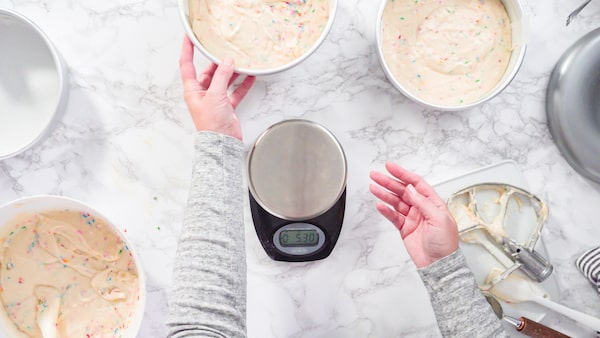
Increasing pan sizes seem to be in sync with increasing portion sizes – at restaurants and fast-food joints as well as at home.arinahabich/iStockPhoto / Getty Images
As someone who has been baking since I was old enough to scoop, dump and stir – in the actual kitchen, since my parents denied me the Easy Bake Oven of my dreams – I’ve acquired an inordinate number of baking pans over the course of my life. Which one I use often depends on my mood, whether I’m feeling nostalgic or modern and, of course, what I happen to be baking.
This was a simpler choice when my collection consisted of 8-inch square, 9-inch round and 9x13, plus loaf tins, pie plates and a bundt pan. But my basement stacks are getting more varied, and at some point last year, when I misplaced my old 8x8-inch, which was once standard in brownie and square recipes, I found it tricky to replace. Nine-inch square pans were everywhere, as well as myriad sizes that used to be limited to specialty shops.
“All my suppliers do 9x9-inch, and we don’t have a choice – that’s their only offering,” says Natalie Ireland, president of Britannia Kitchen & Home in Calgary, one of the shops I visit frequently. When we chatted about pan sizes, she reminisced about a pie she had recently baked using a newer pie plate that was far deeper than the frozen pastry shells she often bought at the grocery store. “I had to cook it about an extra 25 minutes because it was so much thicker,” she says.
I had noticed the same while teaching pie classes at a local culinary school before the pandemic. The gorgeous but deep Emile Henry ceramic pie dishes attendees received were 10.25 inches in diameter (9 inches is standard for pie pans) and had a 6-cup volume. When I measured one of my own average-sized pie pans to compare, it held 4 cups. Such a difference is significant when you expect your filling to fill a pie crust or you want your apples piled high and you need guidance around baking time and temperature.
Increasing pan sizes seem to be in sync with increasing portion sizes – at restaurants and fast-food joints as well as at home. According to the University of Nebraska – Lincoln, the average muffin was 1.5 ounces 20 years ago; today they average 4 ounces – almost triple the size.
Another driver of this shift in pan sizes is likely food media that celebrate elaborate baking projects like ultra-tall layer cakes and bundts baked in fancy fluted pans. There are also more oven options available today, including air fryers and countertop convection ovens (which might – ahem – appeal to grownups who begged for an Easy Bake).
With so many options available, it can be tough for a home baker to know which ones to invest in. To prevent clutter from taking over precious kitchen space – and to keep our baking options open – it’s helpful to learn how to adjust recipes, as well as baking times and/or temperatures.
“By affecting the rate and distribution of heating, cake pans can have an important influence on their contents,” wrote Harold McGee in On Food and Cooking: The Science and Lore of the Kitchen. “The ideal pan size is that which matches the final volume of the cake, which is usually 50–100 per cent greater than the initial batter volume.”
Pastry chef and cookbook author Anna Olson suggests the modern baker learn how to scale recipes to fit the pans they want to use.
“This is a great argument to get us to move from volume measuring to scaling. If you scale your ingredients, it’s simple math,” she says, suggesting that scaling up and down is simpler when ingredients are measured by weight. Not only would this accommodate varying pan sizes, it would be useful for those baking for larger groups or just a few, who may need a smaller or larger cake, or not quite so many cookies or scones.
Much of the introductory and instructional pages of Olson’s next book will be focused on how to scale batters and doughs. Meanwhile, Wilton Brands, a company that has been a leader in the metal bakeware market for over 90 years, has a handy guide on its website to calculate cake-pan size, batter volume, baking time and temperature, and number of servings.
Olson’s advice for the home cook: “If you’re going larger, lower your oven temperature up to 25 degrees and keep your bake time the same; by lowering the temperature, you’re not compromising the way the item bakes when there’s less volume across a larger surface.”
Knowing how to visually assess whether your muffin is fully baked or not – that it should be domed and springy to the touch, for example – is very useful too, and will also help account for variables like convection and other settings as appliances become more high-tech.
As for my search for an old-school 8x8-inch pan, I managed to find a well-used one at a second-hand store. I’ll use it when I want my brownies or Nanaimo bars a bit taller, or when I’m following a recipe written by someone who used theirs. And I’ll now keep the greater range of modern kitchen options in mind when writing recipes, so that no matter which pans someone has in their kitchen, baking will still be a piece of cake.
Plan your weekend with our Good Taste newsletter, offering wine advice and reviews, recipes, restaurant news and more. Sign up today.